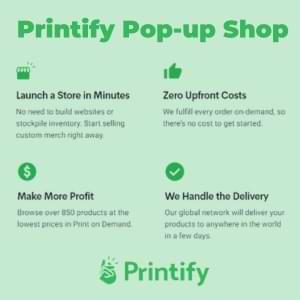Best Marketing Strategies for Small Business Marketing
Have you ever dreamed of owning your own small business? If so, you know that successful marketing and advertising yourself is often the difference between success and failure. With a little creativity and hard work, there are many ways to market your small business on a budget.
Small businesses don’t have the same resources as larger companies do when it comes to marketing. But that doesn’t mean they can’t compete with big brands; all it takes is finding low-cost or free methods to get the word out. From leveraging social media platforms and online marketing to taking advantage of old-school tools like direct mailers, there are plenty of tactics available to help spread awareness of your product or service.
By following these tips and tricks, any small business owner can make their venture stand out from the crowd without going over budget, regardless of which marketing tool or tools you choose to use. So let’s take a closer look at how you can promote your business in an affordable yet impactful way!
What are Small Business Marketing Strategies?
Many people think marketing strategies are only for big businesses, but even small businesses can benefit from a well-crafted plan. After all, when it comes to success — size doesn’t matter! A good strategy can help you identify your target market with a perfectly crafted call to action and reach more customers with fewer resources.
So what is a marketing strategy? In its simplest form, it’s a plan that details how you will promote your product or service in order to increase sales and profits. It should include an analysis of the current marketplace, as well as research into customer needs and preferences. Additionally, it should outline any tactics you’ll use to reach potential buyers, such as advertising campaigns or special offers.
A successful marketing strategy also includes realistic goals and metrics for measuring progress against those goals. By monitoring results over time, you can make adjustments to ensure continued growth and maximum efficiency. This type of planning is essential if you want to maximize your impact on the market and build long-term success for your business.
Best Marketing Strategies to Scale Your Small Business Marketing
Now that we have a better understanding of what marketing strategies are, let’s explore the different types. There are three main categories: traditional, digital, and guerilla marketing.
- Traditional marketing involves using more established methods, such as print flyers or advertisements in newspapers, to reach potential customers. It can also include other forms of offline advertising, like radio or TV commercials. These tactics may be useful for small businesses on a budget since they don’t require many upfront costs but can still bring in results if done correctly.
- Digital marketing is all about leveraging online channels to get your message out there. This includes things like email campaigns, pay-per-click ads, social media posts, and website optimization. Digital marketing has become increasingly popular in recent years due to its effectiveness and low cost compared to traditional methods. For small businesses looking to maximize their return on investment, this type of strategy should be strongly considered.
- Guerilla marketing takes an outside-the-box approach by utilizing unconventional tactics such as flash mobs or surprise events to capture attention and spread awareness of a brand quickly and cheaply. While it is often associated with larger companies that have bigger budgets, smaller businesses can still benefit from these creative approaches without having to break the bank.
When deciding the best marketing strategies for your business needs, consider your budget and goals before making any decisions. Different techniques will work differently depending on the situation so make sure you research thoroughly prior to starting any campaign!
Defining Your Target Audience
It’s ironic that knowing who your target audience is can be the most difficult part of marketing. However, it doesn’t have to be a daunting task if you follow some key steps.
First and foremost, take time to really get to know your business inside and out; its goals, mission statement, products or services offered, competitors in the industry, etc. Knowing this information is essential for defining who exactly you should be targeting with your marketing efforts. Additionally, research other similar businesses within the same market as yours to see what their target audiences are doing differently than yours. This will help you identify potential gaps in the marketplace that could be filled by utilizing more effective strategies with your own target audience.
Once you’ve established all these factors about your business and others around you, it’s time to start researching consumer demographics such as age groupings, gender breakdowns, income levels and geographical locations among others. Understanding which groups may need or want your product or service can allow you to create unique messages tailored towards them—and increase the likelihood they’ll respond positively to those messages when interacting with your brand.
By taking into account all of these different aspects of consumer behavior across various markets and industries, small business owners can better define an ideal customer profile from which they can design effective marketing campaigns that speak directly to their desired audience base—all without having to spend too much money on advertising costs!
Choosing The Right Content Marketing Channels
Now that you have identified your target audience, it’s time to decide on the best channels for reaching them. There are a variety of ways to market to potential customers, including digital and traditional media outlets. To ensure maximum visibility and reach, choose multiple marketing channels that match up with your unique customer base.
Social media is one of the most effective methods for connecting with current and prospective customers in today’s digital landscape. Platforms like Facebook, Instagram, Twitter, YouTube, and LinkedIn offer businesses an invaluable opportunity to build relationships with their target audiences by providing interesting content or engaging conversations. Additionally, social media can be used to increase brand awareness and drive traffic back to a company’s website or other online properties.
For more traditional approaches, advertising in print magazines and newspapers, as well as radio or television commercials, are also great options for small business owners looking to attract attention from local markets. Furthermore, sponsoring events or holding promotional activities such as contests can help create buzz around the business while providing incentives for people to try out the product or service being offered.
No matter which channels you choose for marketing your small business, consistency is key. Make sure all messages align with each other across any medium utilized so that they effectively communicate your core message and successfully promote your brand!
Setting Objectives and Goals for Your Local Business
Setting objectives and goals is a key component of any successful marketing strategy. It’s important to establish concrete, measurable targets that will help guide the direction of your business. This section outlines some steps for setting objectives and goals for your small business.
The first step in creating an effective objective or goal is defining what success looks like. Determine what metrics you want to track, such as monthly sales figures or customer engagement rates. Once you have established these measures, set specific benchmarks that can be used to gauge progress toward achieving them. Be sure to make these goals realistic and achievable within a reasonable time frame.
Once you have determined what success looks like, it’s time to come up with strategies for reaching those milestones. Think about how different approaches could lead to positive results; this may include things like increasing advertising spend on certain channels or launching promotions aimed at driving more traffic to your store. Additionally, consider ways in which you can measure the effectiveness of each tactic so that you can adjust accordingly if needed.
By taking the time to create meaningful objectives and goals, you will be better equipped to develop a strong marketing plan that is tailored specifically to the needs of your small business. With careful planning and consistent effort, there is no limit to what kind of success your company can achieve!
Creating A Marketing Budget
Now that you have set your objectives and goals, it is time to create a marketing budget. But how much should you allocate for marketing? This can be difficult to determine as there are many elements involved in building an effective marketing plan. To help figure out the right amount of money to spend on your business’s marketing efforts, here are some tips.
Consider your resources:
- Time: How much time do you have available to devote to developing and executing a comprehensive marketing strategy?
- Money: What funds do you have available to support your activities?
- Staffing: Do you have personnel with the necessary skills or will you need to hire additional help?
- Research Potential Strategies: Take the time to research potential strategies and decide which ones best meet both your needs and those of your target audience. Evaluate the cost associated with each option and compare prices before making any decisions.
- Allocate Funds Appropriately: Once you’ve identified the most appropriate strategies for reaching your desired goal, develop a realistic budget that allows for adjustments along the way. Be sure to account for all costs (both short-term and long-term) so that you don’t end up overspending or underspending on certain aspects of your campaign. You may also want to consider setting aside some funds just in case something unexpected arises during implementation.
In addition, it’s important not only to establish a budget but also to track progress against it throughout the course of your campaign. Doing so will enable you to monitor performance and make changes if needed in order to ensure optimal results within the allotted timeframe. With these steps in mind, creating an effective marketing budget becomes easier than ever!
Crafting An Engaging Message
Creating an engaging message for your small business is a crucial part of any successful marketing strategy. It can help you capture the attention of potential customers and move them through the sales funnel. To craft an effective message, there are three key elements to consider:
| Who | What | Why |
|---|---|---|
| Target Audience | Message Content | Motivation/Call-to-Action |
The first element to consider when crafting an engaging message is who your target audience is. Knowing this will allow you to tailor your messaging in order to resonate with that specific group of people. Consider their age, gender, interests, location, etc., so you can create content they’ll be drawn to.
Then, think about what type of message content would best communicate your brand’s values and mission statement. Make sure it is relevant and interesting enough for people to take notice and act on it. Finally, decide on a motivation or call-to-action that encourages recipients to take action – such as signing up for a newsletter or attending an event.
By taking these steps into consideration when crafting an engaging message for your small business, you can ensure that it resonates with your target audience and drives desired outcomes.
Measuring Results And Analyzing Data
Having crafted an engaging message for your small business, it’s time to consider the best ways of measuring results and analyzing data. To do this successfully, you must understand what metrics are needed to evaluate whether or not customers have responded positively to the marketing strategies employed by your company. It is also important to ensure that any results obtained from these measurements and analyses can be used to inform future campaigns so as to optimize success with each new effort.
One popular approach is known as A/B testing, which involves comparing two versions of a page or advertisement against one another in order to measure effectiveness. This method allows businesses to quickly determine if a certain element of their messaging has had an impact on customer engagement and behavior, such as click-through rates or conversions – without having to invest too much time and money into creating different variations of the same product or service.
Data analysis should then follow in order to identify trends among customers’ responses. By understanding user behaviors, preferences, demographics, purchasing patterns, etc., companies can tailor their messages more effectively in order to maximize conversions and ultimately increase profitability for their small business. With all this information at hand, managers can make decisions based on hard evidence rather than guesswork alone; thus ensuring strategic plans are always well thought out and informed.
Utilizing Social Media for Online Marketing
Social media is a powerful tool for small business owners.
Platforms like Facebook, Twitter (X), and Instagram can be used to reach potential customers in an efficient and cost-effective way. The key to successful social media marketing is understanding what each platform has to offer and then developing a strategy that works best for your business.
Facebook is one of the most popular platforms for businesses looking to engage with their audiences. It allows users to post content about their products or services, as well as interact with customers through comments and messages on posts. Additionally, it provides access to a wide range of advertising options, such as sponsored stories and ads that can help drive traffic to a website or brick-and-mortar store.
Twitter (X) offers a different approach by allowing quick updates of 140 characters or less, which are easily shared among followers. This makes it great for staying top-of-mind with current customers while also appealing to new ones. Hashtags can be especially useful here because they make tweets easier for people browsing topics related to the product or service being offered.
Using these two platforms in tandem can create an effective online presence that helps connect customers with your brand message quickly and effectively. By consistently creating quality content tailored specifically for each platform, businesses can use social media strategically as part of their overall marketing plan — resulting in increased engagement, more leads, and ultimately higher sales revenue over time.
Influencer Marketing to Increase Brand Awareness
Influencer marketing is a powerful tool for small businesses looking to expand their reach. It involves leveraging the power of influencers and celebrities who have large audiences they can tap into in order to promote products or services. This type of marketing has been proven effective in helping brands drive more sales as well as increase brand awareness and recognition.
The first step in setting up an influencer campaign is finding the right influencers for your product or service. You want to find someone who fits with your brand’s message and values and also reaches the audience you are targeting. Once you have identified potential influencers, it is important to research them thoroughly before reaching out. Make sure they will be able to effectively communicate your message and provide real value to their followers by promoting your product or service.
When building relationships with these influencers, it’s crucial to treat them like partners rather than customers. Provide incentives such as exclusive discounts or early access to new products – this not only keeps them engaged but also shows that you appreciate their help and support. Additionally, establish clear guidelines on what content should be shared so that everyone understands expectations ahead of time. With these steps taken care of, you’ll be ready to take advantage of this highly effective form of marketing!
Email Marketing Strategy for Your Small Business
E-mail marketing is an essential tool for small businesses. It can provide a direct line of communication with potential customers, and it’s relatively low-cost compared to other marketing channels. As such, developing effective email campaigns should be part of any small business’s overall marketing strategy.
The key to successful email campaigns lies in personalization. Your emails need to be tailored to the specific interests and needs of each customer or segment you’re targeting. This means understanding who your target audience is and what they want from your product or service before sending out emails. Additionally, consider how often recipients would like to receive emails from you: some people may appreciate daily updates while others might prefer weekly newsletters.
By taking the time to craft personalized messages that cater directly to individual consumers’ wants and needs, small businesses can use email campaigns as a powerful way to drive engagement and sales.
Search Engine Optimization (SEO)
The power of email marketing campaigns is undeniable, but there are other ways to market a small business. Search engine optimization (SEO), for instance, can help businesses reach their target audiences more effectively. SEO is the process of optimizing web content so that it appears higher up in search results on search engines like Google and Bing. This increases visibility and draws traffic to a website, potentially resulting in increased sales or leads.
But how does one optimize content? To start with, keywords should be used strategically throughout texts, as they help search engines understand what the page is about. Keywords should be placed naturally; stuffing too many into short paragraphs could actually hurt a page’s ranking instead of helping it. Additionally, having quality backlinks from reputable websites will boost a page’s credibility with search engines and increase its rankings. However, link-building must be done carefully to ensure ethical practices are followed at all times.
Lastly, regular monitoring and maintenance of webpages is essential for effective SEO strategies. Pages need to be updated regularly with fresh content that reflects changes in industry trends or customer needs; this helps maintain relevancy and improves chances of getting picked up by search engine crawlers. Companies should track their progress using analytical tools such as Google Analytics to identify areas where improvement is needed and determine which tactics are working best for them. With these steps taken care of, businesses can expect to see an uptick in organic visits over time – leading to better engagement rates with potential customers!
Content Creation & Distribution Marketing Tactics
Creating and distributing content is an important component of any successful marketing strategy. Content creation involves creating a variety of materials, such as blog posts, videos, podcasts, infographics, and other visual media, that can help increase brand awareness and drive traffic to your website or social media accounts. Distributing this content requires careful planning in order to reach the right target audiences. This includes selecting appropriate channels for distribution, crafting effective titles and descriptions, optimizing SEO keywords when possible, setting up campaigns with measurable KPIs (key performance indicators), tracking analytics data from each channel, and adjusting strategies accordingly.
In addition to organic sharing on social platforms like Facebook or Twitter, it’s also beneficial to use paid advertising services like Google Ads or LinkedIn Ads to further extend your reach across different demographics. By using targeted campaigns through these services, you can ensure that you are reaching potential customers who are more likely to engage with your content and become paying customers down the line. Finally, by consistently producing quality content with engaging visuals and compelling copywriting that speaks directly to your target market’s needs and wants you will be able to create genuine relationships with them over time which will foster loyalty towards your business.
Developing Cross-Promotion Opportunities
Cross-promotion is an effective strategy for small businesses to leverage existing relationships and attract new customers. It involves partnering with other companies or organizations, providing mutual benefits in exchange for increased visibility and exposure. Here are some key steps to consider when developing cross-promotion opportunities:
- Establish a list of potential partners that have complementary products or services.
- Reach out to those companies directly by email, phone, or even in person with your proposal.
- Negotiate terms that will benefit both parties equally and create clear goals to measure success.
- Implement the marketing plans together and monitor progress throughout the campaign.
Creating successful partnerships requires patience, dedication, and good communication between all involved parties. As you reach out to potential partners, be sure to clearly explain how each side can benefit from working together; this could include offering discounts on products or services as part of the agreement. With careful planning and execution, these types of collaborations can lead to long-term success for both businesses.
Advertising & Promotion
Advertising and promotion are the lifeblood of a small business. They can be like seeds planted in fertile soil, with lots of potential for growth if done correctly. The following table outlines four different strategies that businesses can use to get their message out:
| Strategy | Cost | Reach |
|---|---|---|
| Social Media Ads | Low-Moderate | High |
| Television Ads | Moderate-High | Moderate-High |
| Radio Ads | Low-Moderate | High |
| Word-of-mouth Marketing | Low | Variable |
Social media ads are one of the most cost-effective ways to reach your target audience because it allows you to tailor your message directly to them. You can customize your ad campaigns by targeting certain demographics or interests, which will help you maximize results for minimal spend. Additionally, it’s an easy way to track performance metrics such as impressions, clicks, and conversions so that you can adjust your strategy accordingly.
Television ads are another great option for reaching a large number of people, but they come at a higher price tag than social media advertising. Depending on how much budget is available, television ads may not be feasible; however, they offer good visibility and generate buzz around brands quickly. It’s important to make sure that the commercials have high production values and interesting content so that viewers remember the brand after watching them.
Finally, radio ads are also relatively affordable depending on what time slot you choose and since many people listen to the radio while driving or doing other activities they tend to pay more attention than when viewing TV or scrolling through social media feeds. Lastly, word-of-mouth marketing is extremely powerful when promoting products and services as customers who’ve had positive experiences are likely to recommend them enthusiastically to others, thus providing free publicity!
Frequently Asked Questions About Successful Marketing for Small Businesses
What Is the Best Way to Reach My Target Audience?
Reaching a target audience is an essential part of any business marketing strategy. With so many options available, it can be difficult to know which one will best meet the needs of your small business. To make sure you’re getting maximum results from your efforts, it’s important to understand the different methods and how they can help drive engagement with potential customers.
One effective way to reach a target audience is through social media marketing.
This method offers several advantages over traditional advertising, such as cost-effectiveness and targeting based on user interests or location. Social media also allows businesses to engage directly with their audiences in real time, giving them greater control over customer interactions and feedback. Additionally, some platforms offer paid advertisements that allow companies to further refine their targeting criteria for improved visibility among key demographics.
Another option is content marketing, which involves creating educational or entertaining materials related to a company’s products or services. Content marketing can be used across multiple channels like websites, blogs, newsletters, and videos, allowing businesses to build relationships with their target audience while providing useful information about their offerings at the same time. It also helps increase brand awareness without having to pay for expensive promotion campaigns.
Overall, understanding what works best for reaching a specific target audience takes research and experimentation, but it is well worth the effort when done correctly. By utilizing both social media and content marketing strategies tailored specifically for small businesses’ needs, companies can optimize their resources for maximum impact with potential customers.
What Is the Most Cost-Effective Way To Create A Successful Marketing Campaign?
Creating a successful marketing campaign can be challenging, especially when trying to do so on a budget. Fortunately, there are several cost-effective strategies that small businesses can use:
- Utilize social media platforms such as Facebook and X (formerly Twitter); these channels will allow you to reach out to your target audience quickly and easily.
- Create content that is relevant to your customers; this could include blog posts, videos, or other forms of visual media.
- Focus on engaging with existing customers by offering discounts or giveaways; this will help build loyalty among current customers and encourage them to spread the word about your business.
- Leverage influencers in your niche; working with influential figures can be an effective way to get your message heard without spending too much money.
These strategies provide small businesses with an opportunity to effectively market their products or services without breaking the bank. Social media provides companies with a low-cost platform for getting their message across, while creating targeted content helps ensure that it reaches its intended audience. Engaging with existing customers and leveraging influencers also go a long way towards building brand recognition and increasing sales potential. By implementing these tactics, small businesses have the chance to create a successful marketing campaign at minimal cost – one which has the power to yield high returns over time.
How Often Should I Measure and Analyze My Marketing Results?
Measuring and analyzing marketing results is an essential part of a successful campaign. It can help businesses understand how their strategies are performing, identify opportunities for improvement, and ensure that resources are being used efficiently. But the question remains: How often should these analyses be conducted?
The frequency of measurement depends largely on the type of business involved and its goals. For example, if a company wants to track changes in customer behaviour or website traffic over time, daily tracking might be necessary. On the other hand, companies with more long-term objectives may only need to measure progress monthly or quarterly. Additionally, factors such as budget constraints or the availability of data will impact when and how often measurements take place.
Ultimately, it’s important for businesses to assess their circumstances and decide what works best for them. A good practice is to start by measuring results regularly (e.g., every week), then gradually adjust the intervals based on observed trends or feedback from customers. By taking this approach, small businesses can make sure they’re getting meaningful insights while still managing costs effectively.
How Do I Create An Effective Content Distribution Plan?
Creating an effective content distribution plan is one of the most important steps in any marketing strategy. It can determine how successfully a business’s message reaches its target audience and, ultimately, how profitable it will be. But coming up with such a plan isn’t always easy; there are numerous factors to consider, from budgets to platforms, and getting it right requires careful thought and planning.
When crafting your own content distribution plan, start by thinking about what channels you’d like to use for delivery—social media sites? Influencers? Paid advertising? Allocating resources between these different areas is key to reaching your desired audience; however, budget restrictions may mean that some methods have to take precedence over others. Consider which ones offer the best return on investment (ROI).
Analyzing data from past campaigns can help inform future strategies too. How many clicks did each post receive? What kind of engagement was generated? With this information at hand, businesses can adjust their approach accordingly—maybe focus more on visuals or shift towards longer-form content rather than shorter posts—and fine-tune their plans until they capture maximum attention.
By considering all elements of their content distribution process carefully and analyzing previous results effectively, businesses can create an effective plan that puts them ahead of the competition and drives real growth.
Which Social Media Platform is the Most Successful for Small Business Marketing?
When it comes to marketing a small business, one key question is: which social media platform is the most successful? There are so many different options available that it can be difficult to decide where to focus your efforts. Fortunately, there are some great ways to evaluate each platform and determine what will work best for you.
One of the first things to consider when choosing a social media platform is how well it matches up with your target audience.
Different platforms tend to attract different types of users based on their content and features. For example, if you’re targeting younger generations, then Instagram or Snapchat might be better choices than LinkedIn. Similarly, if you’re looking for an older demographic, Facebook could be more beneficial than Twitter or TikTok. It’s important to keep in mind that not every platform appeals to everyone, so do research into who uses each site before making any decisions.
Once you’ve identified which platforms have the potential for success, then it’s time to look at other factors like cost and ease of use. Some sites may charge fees for access or advertising, while others don’t require such investments. Additionally, certain sites offer user-friendly tools and resources that allow businesses to quickly set up accounts and start posting content without needing technical knowledge or experience. Ultimately, these elements should play a role in deciding which option is right for your business needs.
In summary, finding the right social media platform requires careful consideration and evaluation of several factors, including target audience alignment, costs involved, and accessibility of features. With all this information taken into account, you can make sure you’re using the perfect tool for reaching out to customers effectively.
Final Thoughts
Marketing strategies for small businesses are essential in order to reach their target audience and create a successful campaign. As such, it is important to consider the cost-effectiveness of each strategy when formulating plans. Additionally, metrics should be consistently monitored and analyzed to ensure that your efforts are paying off.
An effective content distribution plan must also be created so that your message reaches as many people as possible. Social media can be incredibly powerful as an avenue for small business marketing, particularly platforms like Instagram and Pinterest, where visuals can really help draw attention to your product or service.
So, don’t skimp on creating meaningful content; make sure you put care into crafting something special that will grab your potential customers’ attention like a magnet! Then you’ll be able to scale your small business marketing strategy and watch the sales and revenue follow.
What are the best marketing strategies for small businesses? From leveraging social media platforms and online marketing to taking advantage of old-school tools like direct mailers, there are plenty of tactics available to help spread… Click To Tweet
Note: Some links on this page are affiliate links meaning that if you click on my link and make a purchase, I will receive a small commission. It does not however affect the price you pay. Plus, it’s a great way to support me and the content I’m providing.







